TopWire Takes Root in Willamette Valley
Almost everything we love about craft beer, we owe to the common hop (Humulus lupulus). The plant, with a cone-shaped flower, gives IPAs their flavors of stone fruit and citrus. The hop gives pale ales their floral aromas, and stouts and porters their notes of vanilla and chocolate. And they act as preservatives that keep our precious ales and lagers fresher for longer.
For more than a century, the Willamette Valley has been the beating heart of Oregon's hop-growing industry. And in that time, it's been difficult to connect that history with the region's craft beers-until now.
In 2020, Crosby Hop Farm opened TopWire Hop Project, a bucolic beer garden surrounded by rows of the hop farm's Centennial hops, outside Woodburn. It's not just the magical setting that makes TopWire so unique, though; all of the beer on tap and in cans uses hops grown on the Crosby farm. For the first time ever, beer geeks can drink their favorite beers where those beers began.

For Blake Crosby, president and CEO of Crosby Hop Farm, the beer garden elevates the craft experience in a way that's never been done before-at least not in Oregon. "TopWire provides an opportunity for craft beer fans to experience the entire lifecycle of a hop all in one place," he says. "Rarely do hop farmers and beer lovers get to celebrate their craft while standing side-by-side on land that has been tended to for five generations."
And it has its roots in a regional tradition that dates back more than 150 years.
Hops Have a Long History in the Willamette Valley
When the first European immigrants arrived in the Pacific Northwest in the late 1700s, they noticed a distinct lack of native hop plants-no small problem, given that they'd been brewing beer for thousands of years at that point and depended on hops for flavors, aromas, and preservation. These immigrants couldn't count on hop shipments from Europe and the East Coast, either, thanks to a high risk of spoilage and unpredictable delivery schedules.
So, rather than go without beer, Willamette Valley farmers did what Willamette Valley farmers do best: planted hops so they could brew it themselves.
The first European hop varieties were planted in the Willamette Valley in the 1860s, with George Leasure of Lane County producing the first successful harvest in 1869. It was a natural fit, too: The Willamette Valley's soils are rich in nutrients, the Willamette River provides farmers with an ample water supply, and the area's environment and climate are similar to that of the Hallertau region in Germany-one of the largest, most storied hop-producing regions in the world.

Farmers soon built the region's first hop dryers, which made it possible to store and ship hops throughout the Pacific Northwest-and by 1905, Oregon was the top hop-growing state in the nation. (This industry wasn't limited to traditional farmers, either: Monks have been growing hops at Mt. Angel Abbey since the 1880s, as well.)
The success continued even after the end of prohibition; in the 1930s, Polk County was known as the "Hop Center of the World" and was the United States' leading hop-producing county. Decades later, the region remains a vibrant hop-growing region.
Of course, Crosby Hop Farm played a key role in that growth.
In 1900, first-generation hop farmer Albert Crosby planted his first hops just outside Woodburn on a plot of land that, 120 years later, continues to produce a portion of the Crosby Hop Farm's estate-grown hops today.
Fifth-generation farmer Blake Crosby leads the farm today, overseeing more than 600 acres of estate-grown hops. In addition to the hop farm, Crosby Hops also runs an on-site processing plant that produces high-quality hop pellets for craft brewers throughout the United States.

Visiting TopWire Hop Project
Here's how it works: Open Thursday through Sunday, TopWire operates out of a converted shipping container and pours a rotating tap list of craft beers, cider, and non-alcoholic seltzer water-all made by Crosby clients throughout the United States, all made with hops that grew on the Crosby Hop Farm.
From there, visitors can take a seat at shaded tables while enjoying views of the surrounding hop farm and, in the distance, Mount Hood rising above the Willamette Valley. A handful of snacks (such as chips and salsa) are available, local food carts sometimes open on-site, and visitors can place an order for delivery from Luis's Taqueria in nearby Woodburn.
TopWire is typically open May-October, weather permitting. Stay updated via the TopWire Hop Project website, as well as the venue's official Instagram feed and Facebook page.
And if TopWire sounds fun, learn more about other exciting food and farm experiences you can only have in the Willamette Valley.








